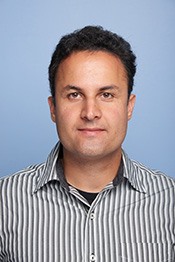Program Information
Real-Time Imaging for 3D Localization of Catheters, Needles and Brachytherapy Seeds Within the Soft Tissue Using X-Ray Induced Ultrasonic Imaging
S Yousefi*, S Tzousmas , H Peng , L Xing , Stanford Univ School of Medicine, Stanford, CA
Presentations
MO-F-708-4 (Monday, July 31, 2017) 4:30 PM - 6:00 PM Room: 708
Purpose: Needles, catheters and brachy seeds are widely utilized in clinic. Interventional radiologists utilize x-ray or ultrasound to guide placement. However, x-ray cannot provide depth information, ultrasound has no specificity and metals add imaging artifacts. We propose a hybrid imaging based on x-ray and ultrasound imaging to overcome these limitations and provide anatomical information as well as specificity of the metallic object for interventional guidance.
Methods: To characterize the feasibility, a simulation study was performed using Geant4. To validate the simulation, a phantom study was performed. A pulsed x-ray (150 KVP, 2.6 mR, 60 ns) was utilized. The acoustic pulse was measured with an ultrasound transducer and visualized in real time. Zinc, Copper, Aluminum and iron targets were tested. Theoretical sensitivity of this approach is limited by the relationship between absorbing target size, dose and noise equivalent pressure (NEP) of the transducer.
Results: The x-ray induced acoustic pulse from the metallic targets were recorded, characterized and compared to the simulations. As expected, zinc had the highest signal because of its Grüneisen factor which defines the efficiency of this technique. The transducer geometry and frequency response are major contributors to the NEP. A typical thermoacoustic system has NEP of around 1 Pa. The acoustic pressure received at the transducer surface should be larger than NEP so that the pulse can be detected. In order to improve the detection sensitivity by an order of magnitude, a transducer array and model-based reconstruction is proposed.
Conclusion: Simulations were performed and validated by actual measurements of x-ray induced acoustic imaging to localize metallic objects within soft tissue. Theoretical limitations of this approach were summarized and a detection scheme was proposed to improve the sensitivity. This technique can be translated into clinic for catheter, needle and brachytherapy seeds placements guidance.
Contact Email:
